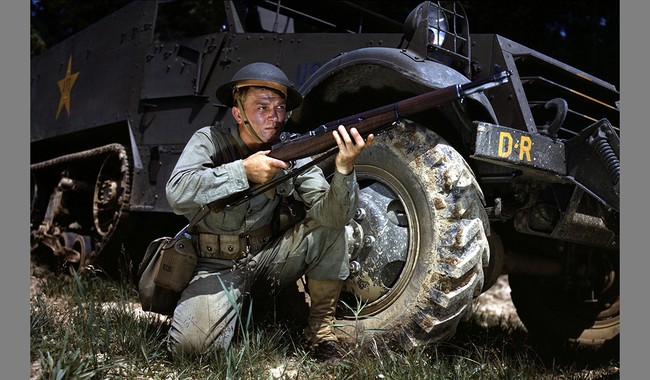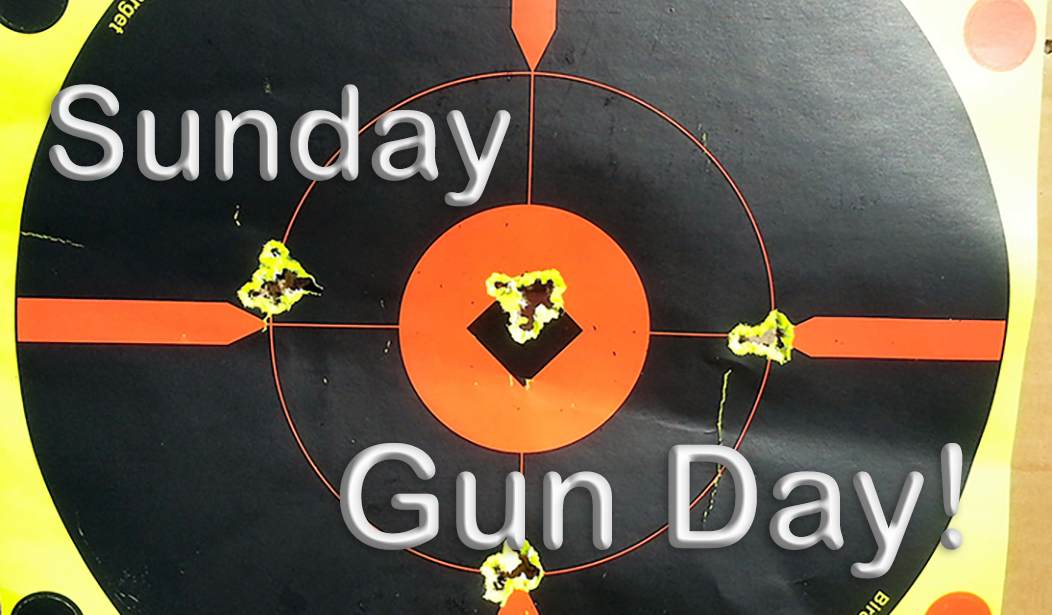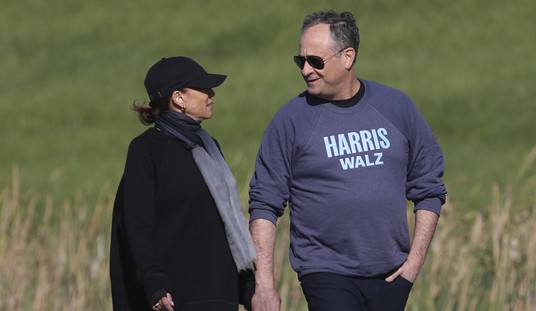The Rifle
In the Second World War, General George Patton was reported to have observed, "War is fought with weapons but is won by men." Well, men can't win without weapons, and there is one weapon that gained the undying admiration of not only Old Blood and Guts but of pretty much every soldier who carried and used one. You know you've accomplished something when you’ve gained accolades from a soldier like George Patton. When a rifle gains that admiration, well, there you have one fine shootin’ iron.
The rifle in question? The M1 Garand semi-auto rifle, firing the grand old .30 Caliber, Model of 1906 cartridge.
The M1 broke a lot of new ground. Not only was it powerful, accurate, and reliable, but it was the first general-issue semi-automatic rifle issued by any major military power and a factor in the Allied victory in the Second World War. But the history of this great battle rifle goes back well before that. And interestingly, the designer of this signature piece, John Garand, was born in Canada.
The Inventor
The young Garand was one of 12 children on a farm near the village of Saint-Rémi, Quebec, on the south side of the St. Lawrence River. The young Garand first worked in a textile mill, where he learned to speak and read English, and then later in a shooting gallery where he developed an interest in firearms.
Then came 1917, and the American Army was taking bids for a light machine gun. Garand submitted a design, which was selected by the War Department, but the design didn’t enter production before the Great War ended. But the acceptance had its rewards, with John Garand being appointed to a job in the United States Bureau of Standards. From there he moved over to the Springfield Armory in 1919, where he worked until he retired in 1955. While there, he was tasked with developing a gas-operated, semi-automatic infantry rifle.
The Design
During the inter-war years, the War Department tested several different patterns. One that seemed favored at first was the .276 caliber Pedersen rifle, known as the T1E3, and for some time it seemed that this rifle would get the nod; but in the end, John Garand’s design, the T1E1 candidate, the .30-06 Garand, was the rifle the War Department chose.
After a few false starts – including recalling the initial production “gas-trap” models to be retrofitted to the newer model gas cylinder (the few remaining gas trap Garands fetch fancy prices from collectors today) the new .30-caliber M1 rifle started being issued to the Army in 1940. By the entry of the United States into World War 2, the Army was completely equipped with the new M1, although some Marine units faced the first year of the war still equipped with bolt-action Springfield rifles. All in all about 5.4 million M1 rifles were manufactured. Manufacturers included the Springfield Armory, Winchester, Harrington & Richardson, International Harvester, and Beretta.
It was in the Second World War that the M1 rifle would rightly earn its place in firearms history.
See Related: Memorial Day Weekend: Grave Robbers Are Desecrating WWII Shipwrecks to Loot 'Pre-War' Steel
US Asks British Archaeologists to Help Recover Missing WWII Pilot
Bear in mind that the primary adversaries faced by American troops when they entered the war were equipped with bolt-action rifles, little changed from their Great War forebears: The Japanese Arisaka, the German Mauser, and the Italian Carcano. The M1 had a significant advantage in rate of fire and capacity, being fed by an 8-round en bloc clip instead of the 5-round box magazine generally found on bolt guns. One disadvantage of that clip was the fact that, after discharging the last round, the rifle ejected the clip with a loud ping, and the accepted wisdom has it that the Germans and Japanese learned quickly that this meant that an American had just fired his last shot, but the American learned very quickly to have their soldiers stagger their reloading, so the poor Japanese or German soldier who heard the ping and decided to rush the American’s position ended up facing another American with a fully loaded M1, who would proceed to ruin the bad guy’s whole day. Another disadvantage was that the en bloc clip loaded into the top of the rifle, and if one was not deft at pushing in a reload, one could end up with the bolt slamming home on a digit, resulting in a condition known as "M1 Thumb."

The rifle certainly made an impact on General Patton. On January 26th, 1945, Patton wrote to Major General Levin Campbell, the War Department's Chief of Ordnance, and stated:
In my opinion, the M-1 Rifle is the greatest battle implement ever devised.
However, my admiration for Ordnance products does not stop with the M-1 Rifle.
Our machine guns, mortars, artillery, and tanks are without equal on the battlefields of the world. In the hands of the unconquerable veterans now composing our armies, the utter destruction of the armed forces of our enemies is certain.
The Competition
America’s friends and foes alike were impressed by the M1 rifle, to the point where they started making their own versions. In 1943, the German companies Mauser and Walther began working on a semi-auto rifle for the German troops. The result was Walther’s Gewehr 43, a long, heavy semi-auto rifle with a 10-round box magazine, firing the standard German 7.92x57mm service rifle cartridge. The rifle, by then renamed the Karabiner 43, was accepted and entered into service in April 1944. Just over 400,000 of these were made, and unlike the M1, made little difference in the outcome of the war.
The Soviet Union had actually beaten the Germans to this punch, with the introduction of the Tokarev SVT-38 (later versions were called the SVT-40) in 1938. 150,000 of the SVT-38s were built, and 1.6 million SVT-40s; these guns fired the 7.62x54R cartridge, the same as used in the 1891 Mosin-Nagant bolt gun. These can still be found in use in the ongoing Russo-Ukrainian war.
The M1 also gave rise, directly or indirectly, to several other rifles for the American troops. In 1938, the great David Marshall "Carbine" Williams was hired to design a carbine to augment the 1911 .45 caliber pistol for paratroopers, support troops, and the like. The new carbine was to weigh 4.5 to 4.75 pounds and to use the Winchester-developed .30 Carbine cartridge, which packs about the punch of a .357 magnum revolver round. After a few false starts, the final design incorporated several features of the M1 Garand, including the rotating bolt and operating slide. The M1 carbine and the select-fire counterpart, the M2, were used by American soldiers and Marines in both major theaters of the Second World War, and civilian versions of it are still sold today. Over 6 million M1 carbines were built for WW2 service.
The M14, which was the U.S. primary service rifle from 1957 to 1964 and is still in use by some units today, was the United States’ last standard-issue main battle rifle and has been described as a “selective-fire M1 with a box magazine.” However, the development and design is a bit more complex than that. The M14’s final design did include some elements of the M1’s action, again, modified to take the 7.62 mm NATO round.
Finally, the civilian Ruger Mini-14 is also loosely based on the Garand action, although the gas system has been updated, and many of the resemblances to the M14 are cosmetic.
Today
The M1 was far from the first semi-auto rifle designed. It wasn’t even the very first semi-auto rifle fielded by a military force; that honor goes to a Great War piece, the French Fusil Automatique Modèle 1917, which was not general issue but did see action in small numbers. But the M1 Garand had an influence on firearm design and warfare that was out of proportion to its time in service, and M1 rifles, available through the Civilian Marksmanship Program and all now legal to sell directly under the Curio & Relics license, remain popular with American shooters.
For shooters, collectors, and history buffs, it's impossible to talk about World War 2 without talking about the M1 Garand.













